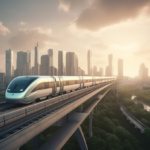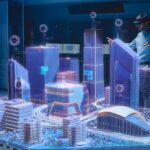Industry Insights: Design and Planning Services
Outline
Introduction
The field of design and planning services is undergoing a profound transformation, driven by technological advancements and a growing emphasis on sustainability. This article delves into the latest trends influencing this sector, highlighting how innovations like smart city technology, sustainable design practices, and data-driven decision-making are reshaping urban planning.
Smart City Technology
Smart city technology represents a significant leap forward in urban planning, integrating advanced technologies such as the Internet of Things (IoT), artificial intelligence (AI), and big data analytics. These technologies enable cities to enhance operational efficiency, reduce resource consumption, and improve the quality of life for residents. For instance, smart sensors and connected devices help monitor and manage urban infrastructure in real-time, from traffic flow to energy usage.
Urban planners and designers are leveraging these tools to create more responsive and adaptive environments. By analyzing data from various sources, cities can optimize services, predict and address issues proactively, and enhance overall urban management. The integration of smart city technology is not only transforming how cities function but also how they are planned and developed.
Sustainable Design
Sustainability is at the core of modern design and planning practices. The focus on creating environmentally friendly and resource-efficient buildings and infrastructures is growing. Sustainable design incorporates principles such as energy efficiency, use of renewable materials, and minimization of environmental impact.
Architects and planners are increasingly adopting green building standards like LEED (Leadership in Energy and Environmental Design) and BREEAM (Building Research Establishment Environmental Assessment Method). These standards guide the design and construction of buildings that reduce energy consumption, lower carbon emissions, and improve indoor air quality. Sustainable design also involves integrating green spaces and promoting the use of sustainable transportation options to enhance urban livability.
Integrated Planning
Integrated planning involves coordinating various aspects of urban development to achieve cohesive and efficient outcomes. This approach requires collaboration among multiple stakeholders, including government agencies, private developers, and community organizations.
Effective integrated planning addresses challenges such as land use, transportation, and infrastructure development in a holistic manner. It emphasizes the need for comprehensive strategies that consider economic, social, and environmental factors. By fostering collaboration and coordination, integrated planning helps create more resilient and sustainable urban environments.
Data-Driven Decision Making
Data-driven decision-making is revolutionizing the design and planning sector by providing valuable insights and enabling more informed choices. Planners and designers are harnessing the power of data analytics to enhance project outcomes and optimize resource allocation.
Advanced analytics tools and technologies allow professionals to analyze large datasets, identify trends, and make evidence-based decisions. This approach improves the accuracy of predictions, enhances planning processes, and supports the development of data-informed strategies. As the availability and quality of data continue to improve, its role in decision-making will become increasingly central to the design and planning industry.
Collaborative Tools
The rise of collaborative tools has transformed how design and planning professionals work together. Tools such as Building Information Modeling (BIM), Geographic Information Systems (GIS), and online collaboration platforms facilitate better communication and coordination among team members and stakeholders.
BIM allows for the creation of detailed digital representations of buildings and infrastructure, enabling teams to collaborate on design and construction processes in real-time. GIS provides spatial data and analysis capabilities, supporting informed decision-making related to land use and infrastructure planning. Online collaboration platforms enable seamless sharing of information and coordination among geographically dispersed teams, improving project efficiency and outcomes.
Case Studies
Case Study 1: Smart City Implementation in Dubai
Dubai's Smart City initiative exemplifies the transformative impact of smart technology on urban planning. The city has implemented various smart solutions, including intelligent traffic management systems, energy-efficient buildings, and advanced waste management technologies. These initiatives have led to significant improvements in traffic flow, energy consumption, and overall quality of life for residents.
Case Study 2: Green Building Design at the Edge
The Edge in Amsterdam is a prime example of sustainable design in action. This building features a range of green technologies, including solar panels, energy-efficient lighting, and an advanced climate control system. The Edge has achieved high ratings for sustainability and energy efficiency, setting a benchmark for future green building projects.
Future Trends
Looking ahead, several key trends are expected to shape the future of design and planning services. These include:
- Advancements in Artificial Intelligence: AI technologies will continue to evolve, offering new opportunities for optimizing design processes, enhancing predictive analytics, and improving project outcomes.
- Increased Emphasis on Resilience: Urban planners will focus more on designing resilient infrastructure that can withstand environmental and climate-related challenges.
- Integration of Augmented Reality (AR): AR technology will enhance visualization and interaction with design concepts, improving stakeholder engagement and decision-making.
- Focus on Human-Centered Design: There will be a growing emphasis on designing spaces that prioritize human well-being, comfort, and accessibility.
Conclusion
The design and planning services industry is experiencing rapid changes driven by technological advancements and a heightened focus on sustainability. By embracing smart city technology, sustainable design practices, and data-driven decision-making, professionals can create more efficient, resilient, and livable urban environments. The future of design and planning will be characterized by continued innovation and collaboration, shaping the cities of tomorrow.
Frequently Asked Questions
Smart city technology refers to the use of advanced technologies such as IoT, AI, and big data analytics to enhance urban infrastructure and services. It aims to improve the efficiency and quality of city operations, including traffic management, energy usage, and public safety.
Sustainable design focuses on creating environmentally friendly and resource-efficient buildings and infrastructures. It helps reduce energy consumption, minimize environmental impact, and promote a healthier living environment, thereby contributing to more sustainable urban development.
Data-driven decision-making involves using data analytics to inform and optimize design and planning processes. By analyzing large datasets, planners and designers can make more accurate predictions, improve resource allocation, and develop evidence-based strategies.
Get in Touch
For more insights and information about our design and planning services, feel free to Contact Us













